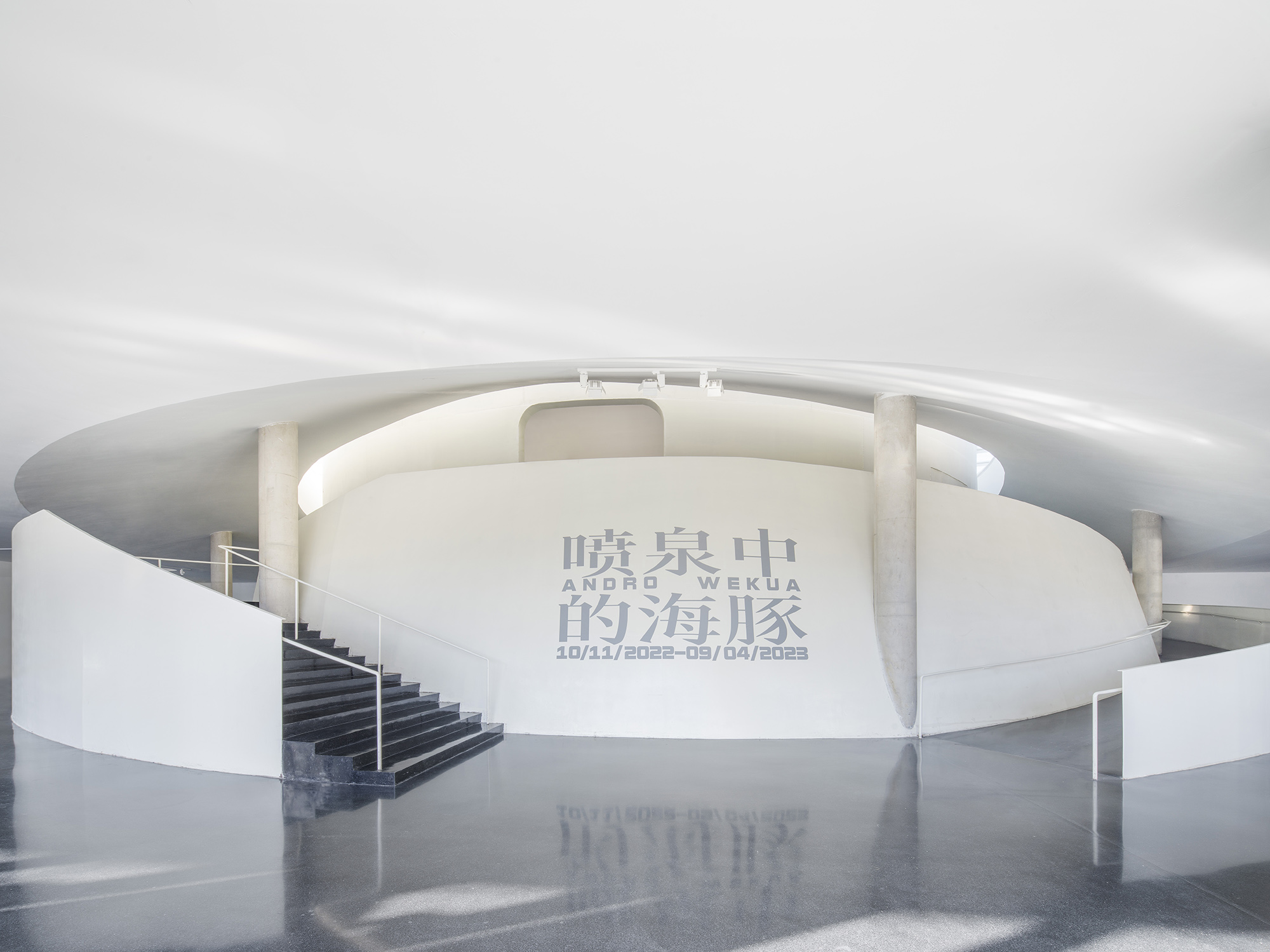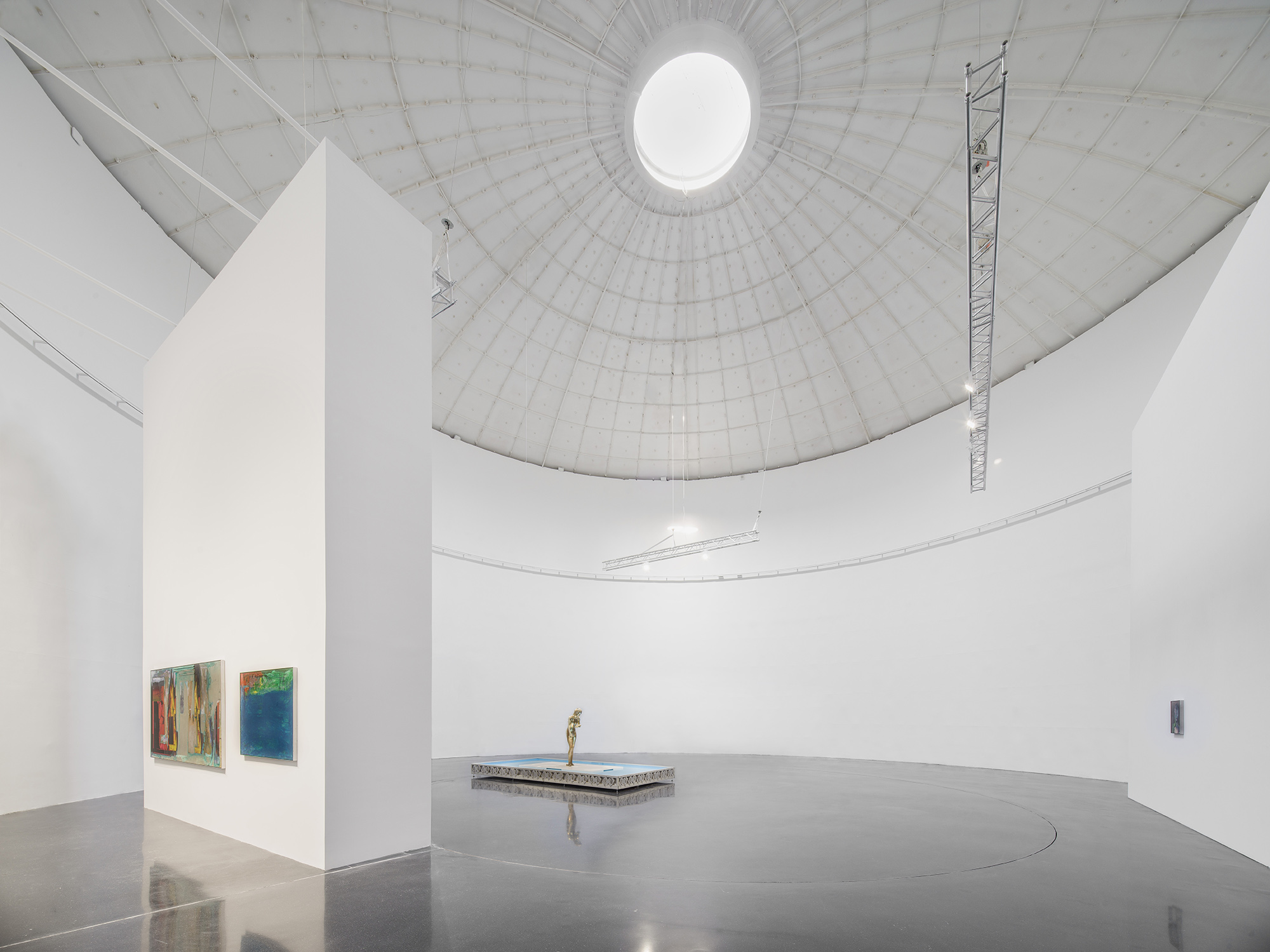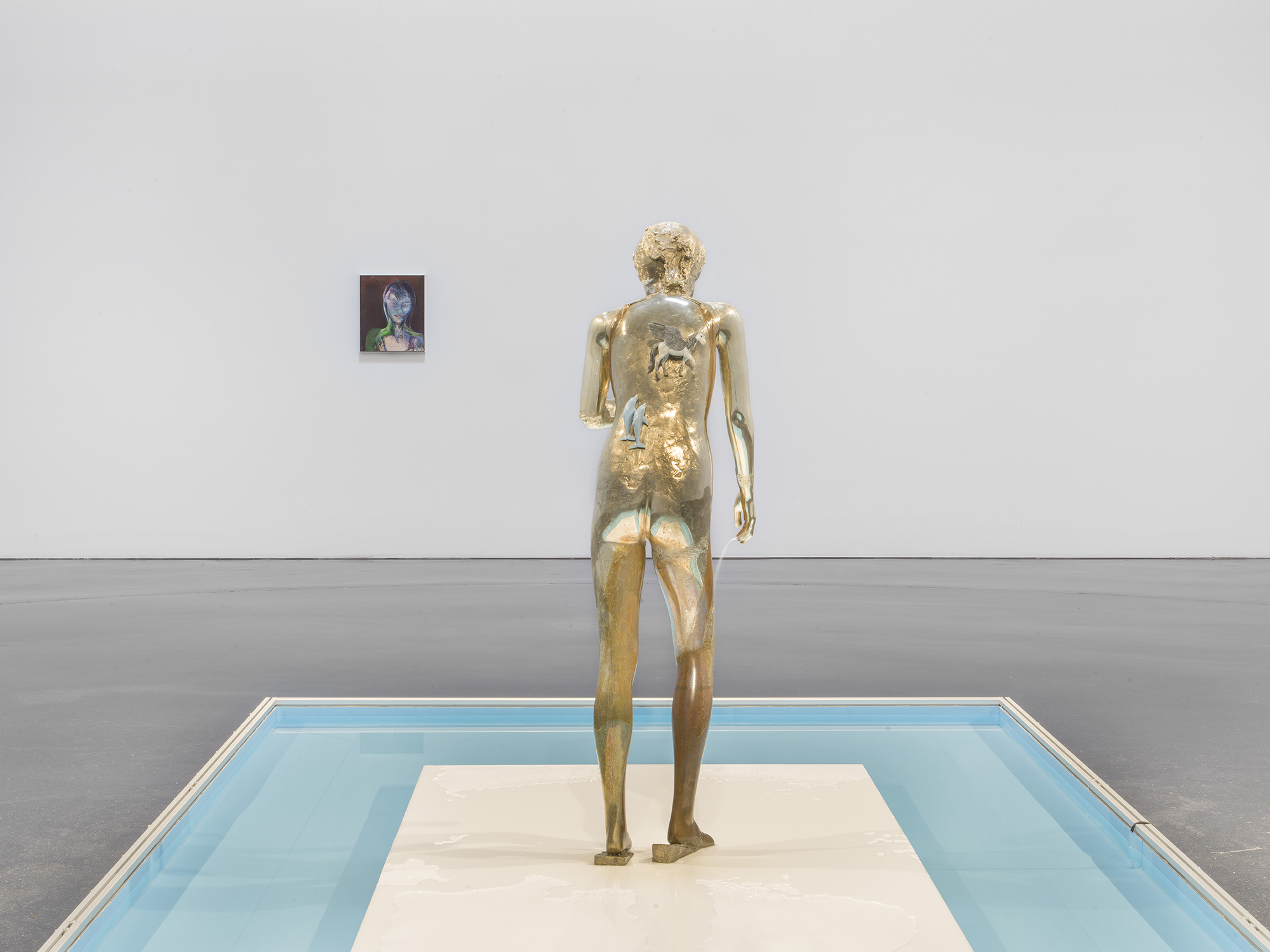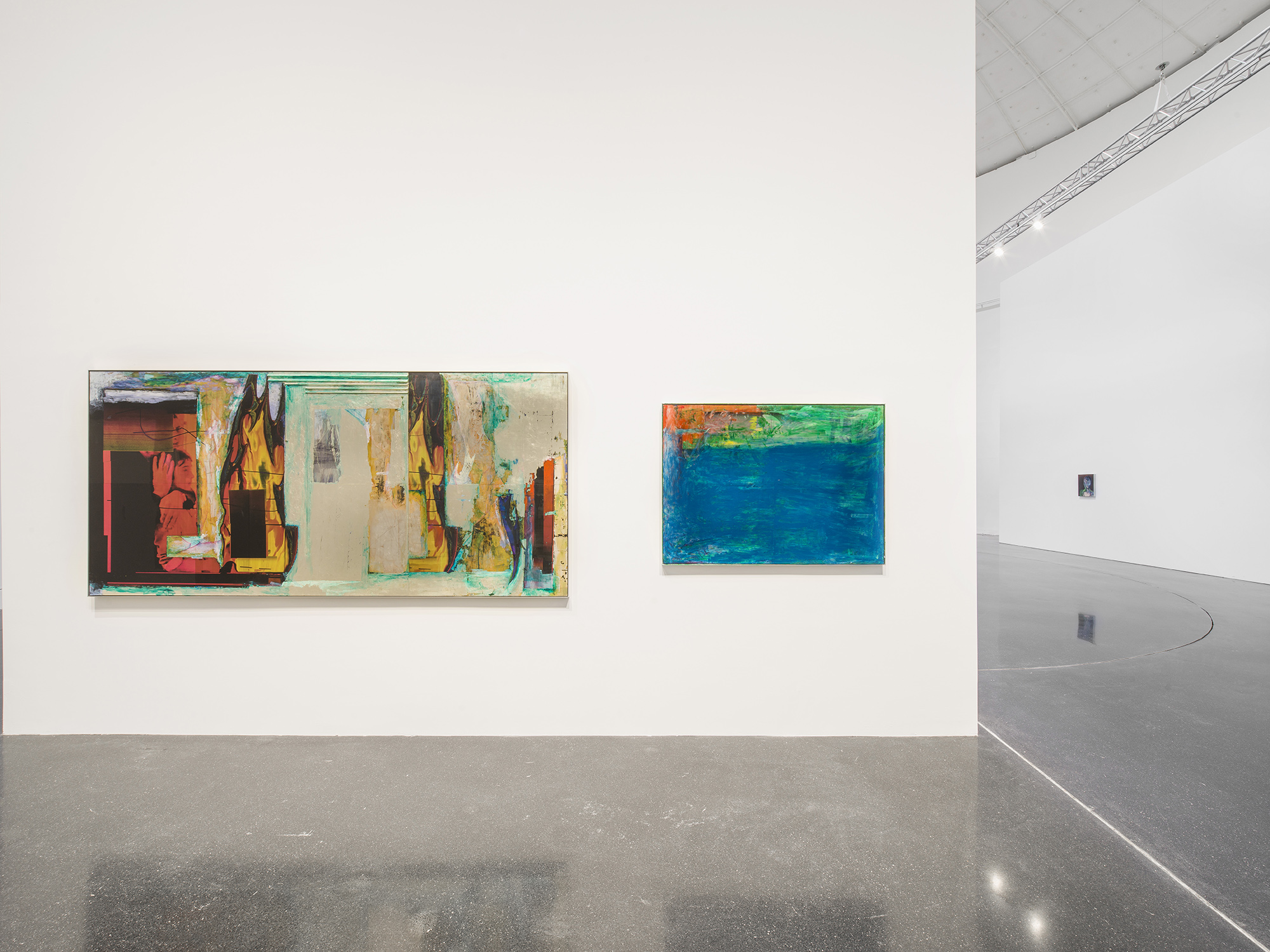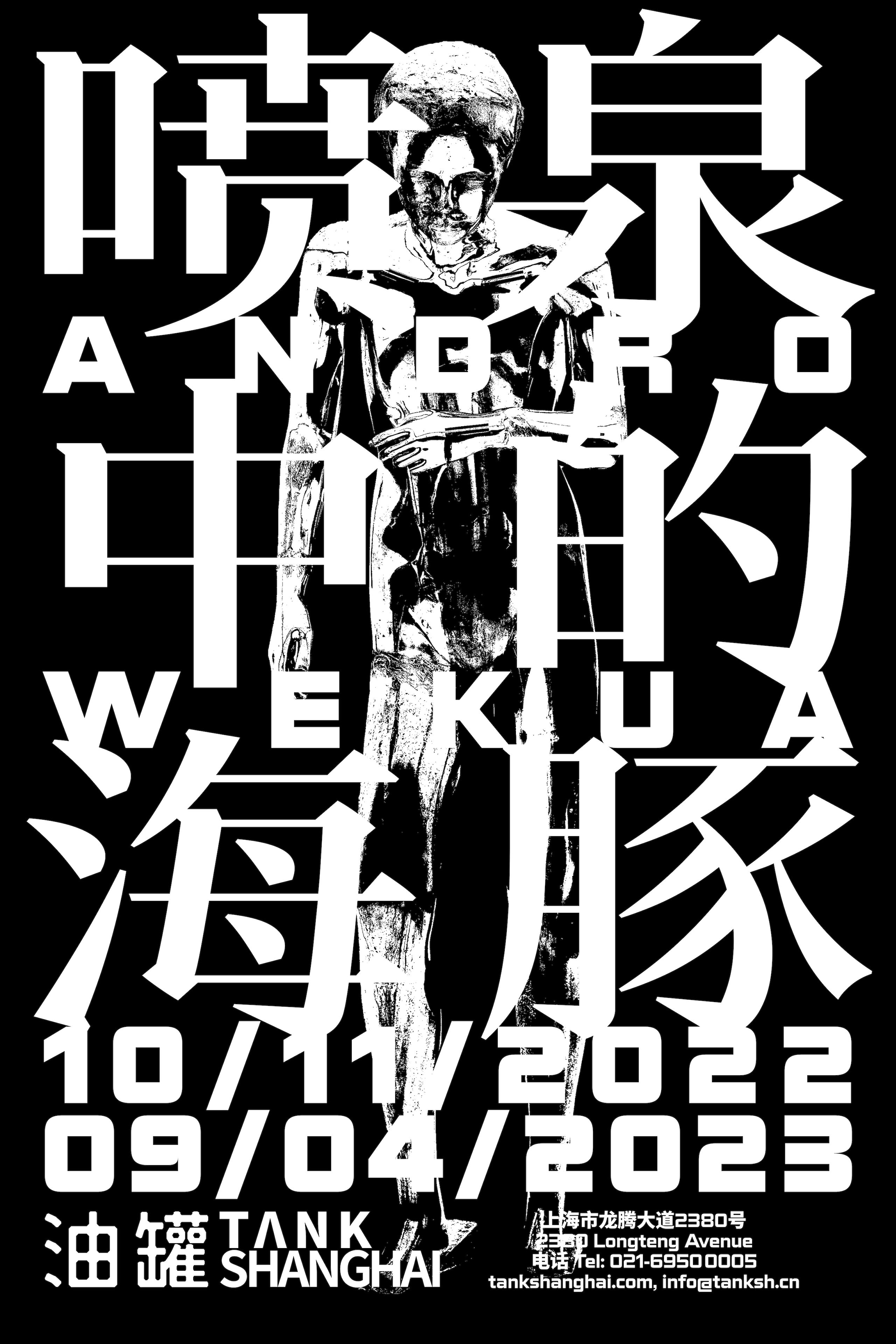
Andro Wekua was born in Georgia in 1977, and he spent his childhood in Sokhumi, a town along the Black Sea coast. In 1994, Wekua left Georgia for Western Europe due to a civil war there. The discrete experience of his Georgian childhood, has always given Wekua’s creative practice a foggy, fragile quality and an uncanny yet pure solitude, while also allowing the past and present to intersect along the fissure between truth and fiction.
Andro Wekua has paid two visits to TANK Shanghai. This exhibition demonstrates his deep understanding of the space at TANK Shanghai, and his unique interpretation of it, creating true connection and wondrous echos between his works and the space.
Wekua’s work has always dealt with the fissures between the past and present, the encounters between memory and reality. He captures those indescribable objects, reconstructing an open but uncertain present. When these adolescent figures appear in Wekua’s work, they always seem constrained in solitude, or withdrawn from their original context. In a new visual structure, Wekua imbues these forms with suspense, a feeling of something pending, which in turn accentuates the sense of uncertainty and possibility.
In the exhibition Dolphin in the Fountain, he conveys uncertainty through the form of a sculpture by the same name. A childlike, genderless body stands alone in the center of a base, which is edged with repeated dragon-like totems. This figure does not look perfect, full of flaws, it is real yet artificial—a bright, polished body cast of nickel silver with mottled, textured patches across its surface. The figure’s body is bent slightly forward, extending a left hand to grasp the emptiness, but also being pulled back by something. Dolphins and a Pegasus are affixed to the figure’s back, both frozen and flying away. The fine stream of water that slowly trickles from the figure’s finger is far from impressive; it cannot be considered a spectacle, but it is a constant, incessant flow of life in a moment frozen in time.
Wekua excels at creating an innocent and seductive space with imagery that seems familiar but ambiguous, introducing different temporalities and condensing them “where time seems to be waiting.” Impressions, memories, and unavoidable images are collectively suspended at the liminal space between the present and the eternal. Wekua offers a non-linear narrative, rejecting the homogenization of identity. He always attempts to transform individual experience into an eternal pause or a state of waiting. We can connect Wekua’s childhood in Georgia with his later experience of living in the West. His work presents the intersection of different dimensions and contexts, pointing to a universal reality through drama and empathy—this might be why Wekua’s work exists in the present.
As Wekua says, “I am not looking at things which are happening or have happened as linear things. If I have a feeling that I need to work on something, it exists emotionally in the present and doesn’t have to do with working with memories or the past. Things are not gone because time passed, for me. Things are always there somehow, in different forms.”
The exhibition features Wekua’s paintings that continue upon his multimedia approach in articulating familiar yet strange, specific yet ambiguous representations of memory. Utilizing processes of layering, silk-screening, and collaging with oils, charcoals, and pencils, he builds upon many layered surfaces to bring forth complex narratives that combine facets of history, geography, fantasy, and memory into physically and conceptually dense compositions.
Several images of Wekua’s life in Georgia during the civil war appear in his paintings and collages—old family photographs from his time in Sokhumi, the silhouettes of family and friends, and images of Georgia that he collected. However, Wekua did not stop there, these images are not an implication of politics or an affirmation of identity, nor do they constitute a realist mode of expression. If we must define it, then we might, for the moment, call it an individual socialist realist archive. In Wekua’s work, these pictures are individual, private, and unidentified, but more importantly, they reject direction, representation, and interpretation. Wekua consciously disassembles these pictures. Obscure faces, people without eyes or wearing masks, parts of bodies, dolphins, sea gulls, a Pegasus, palm trees, as well as dreamy yet depressing pink, yellow, and blue, together are interwoven in fantastical images.
Wekua explains, “In my work it’s a question of attempting to create something artificial and natural—artificial figures that have to do with something real. I can see many things sharply, while I can perceive others only as a blur. If someone tells me that I’ve just read up a memory and it doesn’t correspond to any true experience, I’m almost ready to believe it. These things are at the boundary between memory and dream—especially because they’re only present in fragments.”
In Wekua’s works, the adolescent or childlike figures are often genderless, wearing masks, or without eyes. Simply put, they are obscure and ambiguous. Wekua always extracts the human figures from private images and memories, transforming them into a representation that transcends self-referentiality. He often uses collage in his work, and this technique can be understood in a more conceptual way. Here, collages are not simply extraction of material, but also more cutting, superimposition and dislocation. The appearance of objects implies the erasure of traces. When details are vague or lacking, the imagination can run wild. This exhibition also presents three of Wekua’s paintings. Pictures and other images are appropriated as the base of what you gonna do (2019). On the left side of the painting, a man’s hands embrace a child and cover their ear. The face of the man is obscured by a square, and the woman standing behind him is only visible in profile, but all three people look toward the right side of the piece. Red and yellow flames, patches of silver foil, and green with torn edges render us unable to identify whether this is a painful moment that took place in the past, corroded by time, or a preserved moment of suspense. The figure in Portrait (2022) still has a childlike appearance, but the contours are painted with penetrating brushstrokes. The blue applied to the hair and face and the green distorting the shoulder are artificial yet austere. The background is a field of black, unevenly covering the blue underneath. All of the colors and markings are preserved and made visible. The clashing colors and pictorial structure in Delfin (2021-2022) create an intense instability. Large swathes of dark blue fill the frame, topped with a muddled green along the uppermost edge. The unexpected orange, red, and grey in the top left preserve the neat border of the layered photograph. They directly connect to the blue-green on the right side, which contains what appear to be floating water plants and dolphins. The undefinable melancholy of the entire work conceals a surging vitality.
There is a rigor to Wekua’s activation and control of imagery. All of the threads are interwoven, but they do not rely on symbols. His work contains many fragments of memory that are constantly shifting between representation and abstraction and oscillating within a new narrative structure in different forms, thereby becoming continuous. Whether past or present, the living and the non-living, everything exists in an eternal state of inherent conflict. While the objects are present, many more subjects are absent or unspeakable. Color, brushwork, atmosphere, sound, and shape collectively build sensory and mental connections. As a result, Wekua’s works are not monologues on nostalgia or personal feelings; they become part of a set of universal present circumstances that exist within the private and public, past and future.
ARTIST BIOGRAPHY
.jpg)
Andro Wekua was born in 1977 in Georgia, and studied visual arts there and in Basel, Switzerland. Solo museum exhibitions include Kunsthalle Zürich, Switzerland; Garage Museum of Contemporary Art, Moscow; Kölnischer Kunstverein, Germany; Kunsthalle Wien, Austria; Kunsthalle Fridericianum, Kassel, Germany; Castello di Rivoli, Turin, Italy; WIELS, Brussels; Kunst Halle Sankt Gallen, Switzerland; Kunstmuseum Winterthur, Switzerland; Museum Boijmans Van Beuningen, Rotterdam, Netherlands; Camden Art Center, London; the De Hallen Haarlem, Netherlands; Le Magasin, Grenoble, France; and the Benaki Museum, Athens.
He has participated in various group shows including “ILLUMInations’' at the 54th Venice Biennale (2011); “Contemplating the Void” at the Guggenheim Museum in New York (2010); “10,000 Lives,” 8th Gwangju Biennale, South Korea (2010); “Life on Mars: 55th Carnegie International,” Carnegie Museum of Art, Pittsburgh (2008), and the 4th Berlin Biennial (2006).

